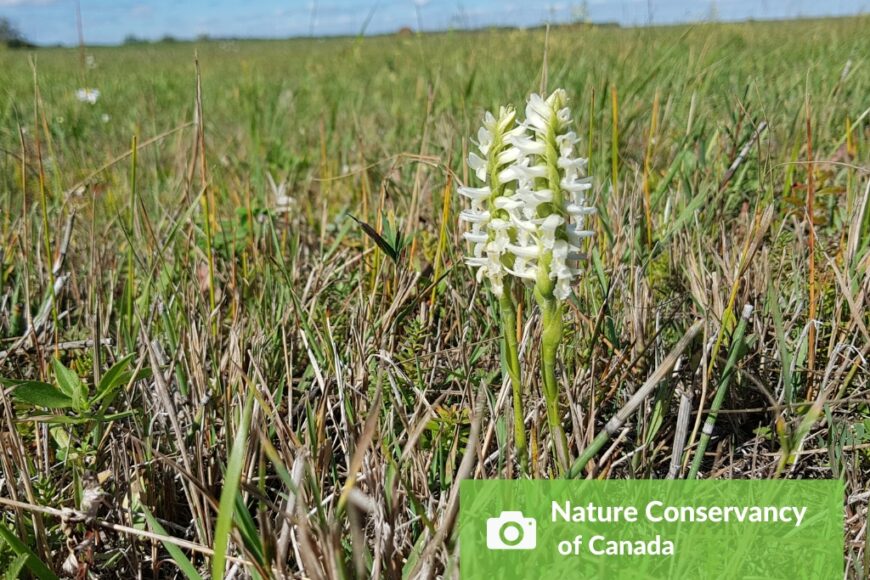Dawson Trail Dispatch, written by Norm Gregoire, September 2024
Page 12 https://issuu.com/dispatch222/docs/dawson_trail_dispatch_september_2024
September marks the closing of summer, and with that, in the tall-grass prairie, we see the last of the wildflowers opening in full bloom. Luckily for us, one of the most unique orchids found here is at its peak during this time, and that is the Great Plains ladies’-tresses. This orchid is best viewed on your hands and knees to appreciate the intricacies of this species at risk. From this low angle, looking around will give you a different perspective on the vast array of life in the tall-grass prairie.
Great Plains ladies’-tresses are a small perennial growing 12-38 cm in height. The leaves are over 1 cm wide and up to 14 cm in length and will usually wither before blooming. There are multiple, white-coloured flowers that spiral up the stem, each measuring about 1.5 cm in length. Due to its aromatic scent, this orchid is often smelled before being seen. The scent has been described as the strongest of any plant in the tall-grass prairie and can be compared to everything from vanilla to sweetgrass. This strong scent helps pollinators find the tiny orchid which is otherwise hidden among a sea of tall grasses.
To properly identify this orchid from others, you will have to investigate closely. In the tall-grass prairie Great Plains ladies’-tresses may be confused with hooded ladies’-tresses. A good first step to take while trying to differentiate these two ladies’-tresses is to note the time of year that they are in bloom. Hooded are first to bloom from mid-July into August, whereas Great Plains bloom from mid-August until the end of September. There can be some overlap with blooming periods, so this is not always a reliable way to properly separate the two orchids. The hooded ladies’-tresses petals and sepals form a “hood” over the lip, which is more fiddle-shaped. Great Plains ladies’-tresses sepals are more spreading, and the lip is not constricted, and the lip is rounded right until the end. These differences are slight, so it does take some time spent with each orchid to get confident enough to give a positive identification.
Great Plains ladies’-tresses tend to grow in soils with low acidity in prairie and sedge meadow habitats. Moist areas, including ditches and road allowances, provide habitat as well; therefore, the orchid is susceptible to the maintenance of these areas.
In my own yard, I had decided to let some of the grass grow near the treeline this year. To my surprise, ladies’-tresses began to grow here! It amazes me how such delicate-looking flowers can be so hardy, taking advantage of an opportunity to grow that was given to them. Having ladies’-tresses growing in my yard is a great addition and part of what makes calling the tall-grass prairie home so special.
Adventures with Nature Norm
On this month’s Adventures with Nature Norm, we are taking a closer look at the tallest and smallest that the tall-grass prairie has to offer. This is a great opportunity to see the tiny Great Plains ladies’-tresses in full bloom. Also, at this time, the tallest grasses, such as big blue stem and prairie cord grass, will be at their maximum height. This free event is taking place on Saturday, September 7th, from 10 a.m. to 12 p.m. The starting point is at the Agassiz Interpretive Trail, which is 7 km west of Vita off Highway 201. To register or for more information, please contact info@sharedlegacy.ca. I hope to see you there!

